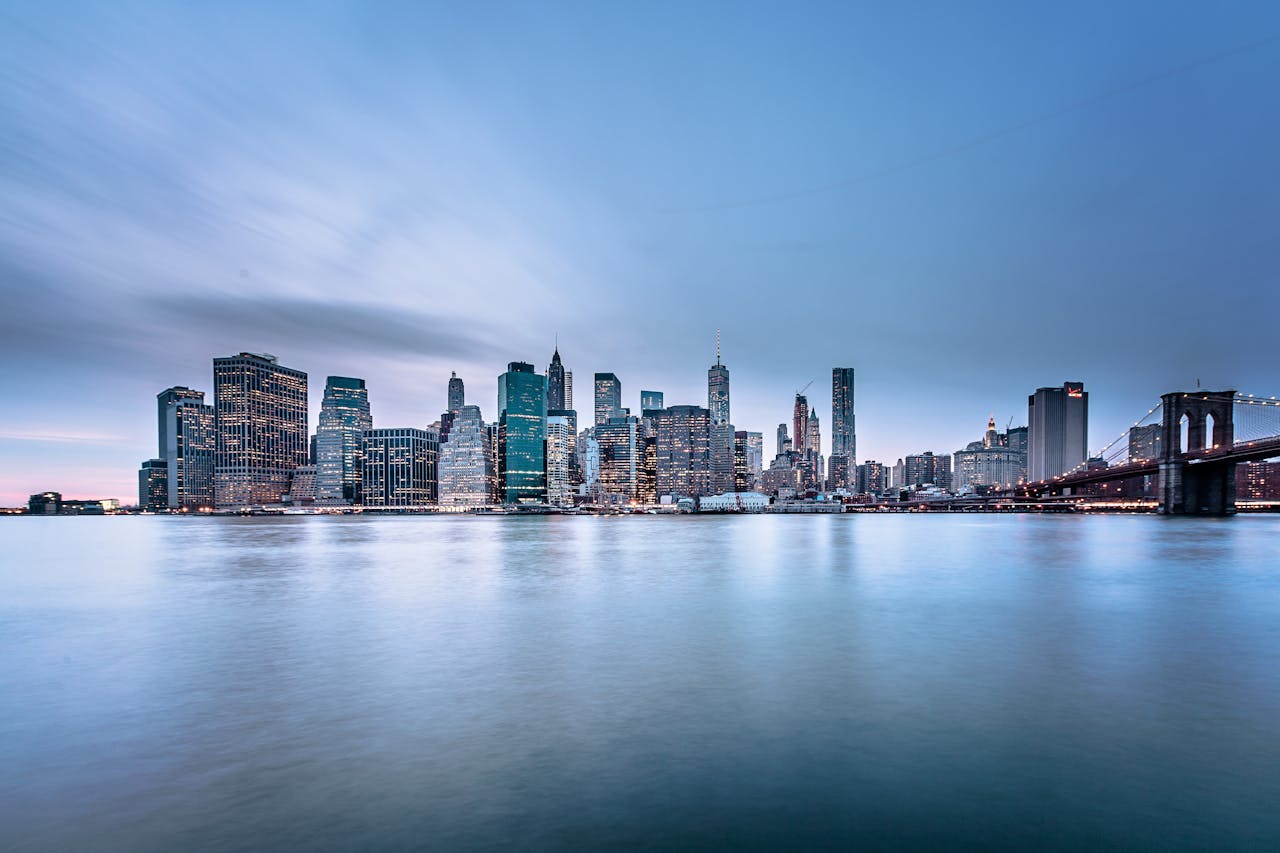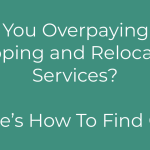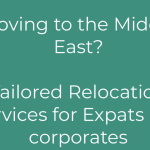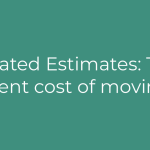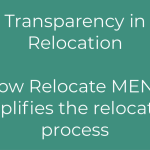An introduction to New York City
Dreaming of moving to New York City? The Big Apple is a global hub of culture, finance, and entertainment. With iconic landmarks, diverse neighborhoods, and endless opportunities, relocating to New York offers an exciting new chapter in life.
Overview
New York City, located on the eastern coast of the United States, is composed of five boroughs: Manhattan, Brooklyn, Queens, The Bronx, and Staten Island. Each borough has its unique character, from the bustling streets of Manhattan to the artistic communities in Brooklyn. Living in New York City means immersing yourself in a melting pot of cultures, languages, and experiences.
Understanding the local culture and dynamics is essential. Relocate MENA and Relo-Global offer cultural orientation services to help you acclimate quickly to life in NYC.
Importing Household Goods and Vehicles
When moving to New York City, it's important to navigate U.S. customs regulations for importing household goods and vehicles.
Importing a vehicle requires compliance with U.S. environmental and safety standards enforced by the Environmental Protection Agency (EPA) and the Department of Transportation (DOT). Modifications may be necessary, which can be costly.
Customs Regulations for Household Goods
Personal effects and household items can generally be imported duty-free if they have been owned and used for at least one year. Items should arrive no earlier than six months before and no later than six months after your own arrival.
Importing Vehicles
Importing a vehicle requires compliance with U.S. environmental and safety standards enforced by the Environmental Protection Agency (EPA) and the Department of Transportation (DOT). Modifications may be necessary, which can be costly.
Documentation Requirements
For Household Goods
- Valid passport and visa
- Detailed inventory in English
- Proof of ownership for valuable items
For Vehicles
- Original vehicle title and registration
- EPA Form 3520-1 and DOT Form HS-7
- Bill of lading
Visa and Immigration Requirements
Securing the appropriate visa is a critical step in relocating to New York City.
Depending on your reason for moving, there are multiple visa options in each category:
- Work Visas
- H-1B Visa for specialty occupations
- L-1 Visa for intracompany transfers
- O-1 Visa for individuals with extraordinary ability
- Investor Visas
- E-2 Visa for treaty investors
- EB-5 Visa for immigrant investors
- Student Visas
- F-1 Visa for academic studies
- J-1 Visa for exchange visitors
Application Process
- Determine eligibility and visa type
- Obtain a sponsor if required
- Submit a petition through your sponsor
- Complete Form DS-160 online
- Schedule and attend a visa interview
Documentation Needed
- Valid passport
- Visa application forms
- Photographs
- Employment offer or acceptance letter
- Financial statements
- Educational certificates
Visa and Immigration Services
Relocate MENA and Relo-Global offer immigration services to guide you through this process, ensuring all paperwork is correctly completed and submitted on time.
Take a look at our Visa & Immigration Service page for more information.
Education and Schools
New York City offers an extensive array of educational opportunities, making it an ideal place for families and individuals seeking quality education. The city's education system is one of the largest and most diverse in the United States, providing options that cater to a wide range of needs and preferences.
The public school system in New York City is operated by the New York City Department of Education (DOE), which is the largest school district in the United States. The DOE oversees more than 1,800 schools, serving over one million students. The city also boasts a significant number of private and international schools, offering various curricula and educational philosophies.
School Search Service
Navigating the vast educational landscape of New York City can be overwhelming. Relocate MENA and Relo-Global offer personalized guidance to help you make informed decisions about your children’s education or your own academic pursuits.
By leveraging the expertise of Relocate MENA and Relo-Global, you can navigate the education system confidently, ensuring the best possible outcomes for you and your family. Take a look at our School Search Service for more information.
Cost of Living in NYC
Understanding the cost of living in New York City is crucial for anyone considering a move to this vibrant metropolis. NYC is renowned for its high expenses, but it's also a city that offers unparalleled opportunities, culture, and amenities. By planning carefully and being informed about typical costs, you can budget effectively and make the most of what the city has to offer.
Housing in NYC
Housing is often the most significant expense when living in New York City. The cost varies greatly depending on the borough and neighborhood you choose.
Manhattan is the most expensive borough. Renting a studio apartment can range from $2,500 to $3,500 per month, while a one-bedroom apartment may cost between $3,000 and $4,500 per month. Popular neighborhoods like the Upper East Side, Chelsea, and Tribeca tend to have higher rents due to their prime locations and amenities.
Brooklyn offers a mix of trendy and residential areas. Neighborhoods like Williamsburg and DUMBO are popular among young professionals and can be pricey, with rents ranging from $2,000 to $3,500 per month. More affordable options can be found in areas like Bushwick or Bedford-Stuyvesant.
Queens provides more budget-friendly housing without sacrificing access to the city. Areas like Astoria and Long Island City offer rents from $1,800 to $3,000 per month and have seen growth due to their proximity to Manhattan and vibrant communities.
The Bronx and Staten Island tend to have lower housing costs, making them attractive options for those looking to save on rent. Prices can range from $1,500 to $2,500 per month for apartments in these boroughs.
Buying Property
Purchasing property in NYC is a significant investment. The median home price in Manhattan exceeds $1 million, while other boroughs offer relatively more affordable options:
- Brooklyn: Median home prices around $800,000.
- Queens: Median home prices approximately $600,000.
- The Bronx: Median home prices near $500,000.
- Staten Island: Median home prices around $550,000.
Keep in mind that buying property involves additional costs such as closing fees, property taxes, and maintenance charges, especially in co-operative buildings (co-ops) or condominiums (condos).
Employment and Job Market
Portland boasts a diverse and thriving economy, making it an attractive destination for job seekers. Key industries in the city include technology—often referred to as the "Silicon Forest"—manufacturing, healthcare, and creative services.
There is a high demand for professionals in fields such as software engineering, healthcare, and the arts. For example, software engineers can expect an average annual salary of around $90,000, while registered nurses may earn approximately $75,000 per year.
Non-U.S. citizens must obtain the appropriate work permits, which are typically tied to your visa status. Networking is a valuable tool in Portland’s job market, with numerous tech meetups and industry conferences providing opportunities to connect with potential employers.
Relocate MENA and Relo-Global can assist with job search strategies and guide you through the process of obtaining necessary work permits.
Job search resources
Housing and Accommodation
Finding a place to live that suits your needs is a crucial part of settling into Portland. The city offers a range of housing options, from modern apartments to charming single-family homes.
Popular neighbourhoods include:
- Pearl District
Known for its urban living, art galleries, and boutique shopping.
- Nob Hill (Northwest District)
Offers historic charm with upscale dining and shopping experiences.
- Sellwood-Moreland
A family-friendly area with parks, good schools, and a strong sense of community.
Renting typically involves identifying suitable properties through online listings or real estate agents, followed by submitting a rental application that includes references and a credit check. Monthly rent can range from $1,200 to $2,500, depending on the location and size of the property.
If you’re considering buying a home, engaging a reputable real estate agent is advisable. Getting pre-approved for a mortgage can streamline the purchasing process. Home prices vary widely but generally fall between $350,000 and $600,000.
Relocate MENA and Relo-Global offer personalized home search services to help you find the perfect accommodation.
Useful real estate websites
Healthcare System
Navigating the healthcare system in New York City is an important aspect of settling into life in the city. NYC offers a combination of public and private healthcare options, with a reputation for high-quality medical care and access to some of the best hospitals and specialists in the country.
Health insurance is essential in the United States due to the high costs of medical services. Most residents obtain insurance through their employer, but individual plans are also available through the Health Insurance Marketplace under the Affordable Care Act. It’s important to choose a plan that fits your needs, covering primary care, specialists, and emergency services.
Finding a doctor can be done by checking with your insurance provider for a list of in-network physicians. You can choose from a wide range of primary care doctors and specialists. Hospitals like NewYork-Presbyterian, Mount Sinai, and NYU Langone Health are renowned for their medical services and facilities.
Primary care physicians often serve as the first point of contact for non-emergency health issues. It’s advisable to establish a relationship with a primary care doctor soon after arriving. They can provide routine check-ups, preventative care, and referrals to specialists if needed.
Emergency services are readily accessible, with numerous hospitals offering 24-hour emergency rooms. In case of a medical emergency, dialing 911 will connect you to ambulance services. Urgent care centers are also available for non-life-threatening situations that require prompt attention.
Prescription medications are obtained through pharmacies located throughout the city. Pharmacies like CVS, Walgreens, and local drugstores fill prescriptions provided by your doctor. Be sure to understand your insurance plan’s coverage for medications, including any co-pays or deductibles.
Relocate MENA and Relo-Global can assist you in understanding the healthcare system, selecting suitable health insurance plans, and finding reputable medical providers. Their guidance ensures that you have access to necessary medical care and that you’re informed about healthcare practices in the U.S.
For more information on health insurance options and healthcare services in NYC, you can visit:
Transportation and Getting Around
New York City's extensive public transportation system is one of the most efficient ways to navigate the city.
Navigating New York City is facilitated by an extensive and efficient public transportation system. Operated by the Metropolitan Transportation Authority (MTA), the network includes subways and buses that cover all five boroughs, making it convenient to reach virtually any destination in the city.
The subway is the backbone of NYC’s transit system, running 24 hours a day, seven days a week. With a standard fare of $2.75 per ride, it’s an affordable way to get around. Payment options include the traditional MetroCard and the new contactless OMNY system, allowing you to tap and pay using a smartphone or credit card.
Buses complement the subway by providing service to areas not directly accessible by train. They accept the same payment methods and offer free transfers to the subway within a two-hour window. This integrated system ensures comprehensive coverage across the city.
Taxis and ride-sharing services are widely available for more personalized transportation. Iconic yellow cabs can be hailed on the street, while apps like Uber and Lyft offer convenient alternatives with upfront pricing. These options are particularly useful during late hours or when traveling to areas less served by public transit.
Cycling and walking are popular ways to get around, especially for shorter distances. The city offers a bike-sharing program called Citi Bike, with numerous docking stations throughout Manhattan, Brooklyn, Queens, and the Bronx. Walking is often the quickest way to navigate crowded streets and explore the city’s diverse neighborhoods.
Owning a car in New York City is often unnecessary due to the efficiency of public transportation and the challenges of driving in heavy traffic. Parking can be expensive and difficult to find, so many residents rely on public transit, cycling, or walking for their daily commutes.
For air travel, NYC is served by three major airports: John F. Kennedy International Airport (JFK), LaGuardia Airport (LGA), and Newark Liberty International Airport (EWR). These airports provide extensive domestic and international flights, making travel to and from the city convenient.
Culture and Lifestyle
New York City is a vibrant tapestry of cultures, offering an unparalleled lifestyle that attracts people from all over the world. Living in NYC means immersing yourself in a city that never sleeps, where diversity is celebrated, and opportunities for cultural enrichment are endless.
The city’s multicultural environment is one of its defining features. With over 800 languages spoken, NYC is one of the most linguistically diverse cities globally. Neighborhoods like Chinatown, Little Italy, Harlem, and Jackson Heights offer unique cultural experiences, each with its own traditions, cuisines, and festivals.
Arts and entertainment are integral to New York City’s identity. The Broadway theater district in Manhattan is renowned for world-class performances, ranging from classic plays to cutting-edge musicals. Museums like the Metropolitan Museum of Art, Museum of Modern Art (MoMA), and the Guggenheim house some of the most significant art collections in the world.
The culinary scene in NYC is a food lover’s paradise. The city offers an eclectic mix of dining options, from Michelin-starred restaurants to street food vendors. You can savor authentic dishes from virtually every culture, reflecting the city’s diverse population. Iconic foods like New York-style pizza, bagels, and cheesecake are must-tries.
Parks and green spaces provide a respite from the urban hustle. Central Park is an oasis in the heart of Manhattan, offering walking paths, lakes, and recreational facilities. Other notable parks include Prospect Park in Brooklyn and the High Line, an elevated linear park built on a former railroad track.
The nightlife in New York City is dynamic and diverse. From upscale rooftop bars and jazz clubs to underground music venues and comedy clubs, there’s something for everyone. Neighborhoods like Williamsburg and the Lower East Side are popular destinations for nightlife enthusiasts.
Festivals and events are held year-round, celebrating everything from film and fashion to cultural heritage. Notable events include the Tribeca Film Festival, New York Fashion Week, the Macy’s Thanksgiving Day Parade, and the New York City Marathon. These events contribute to the city’s energetic atmosphere and provide opportunities to engage with the community.
Living in NYC means embracing a fast-paced lifestyle. The city’s residents are known for their ambition and resilience. While the environment can be demanding, it also fosters innovation and creativity, making it an exciting place to live and work.
Relocate MENA and Relo-Global can help you navigate the cultural landscape of New York City. Their cultural orientation programs provide insights into local customs, social norms, and opportunities to engage with the community, ensuring a smooth transition into your new life in the city.
Safety and Security
New York City has made significant strides in reducing crime over the past few decades, transforming it into one of the safer large cities in the United States.
The city’s overall crime rate has decreased substantially since the 1990s, thanks to effective law enforcement strategies and community initiatives. While violent crimes have become less common, it’s important to remain vigilant, as with any major metropolitan area.
Safety can vary between neighborhoods, so familiarizing yourself with your local area is advisable. Busy, well-lit streets are generally safe, but caution is recommended in less populated areas, especially at night. Common sense practices such as keeping your belongings secure, being aware of your surroundings, and avoiding displays of valuables can greatly reduce the risk of petty crimes like pickpocketing or theft.
The New York City Police Department (NYPD) maintains a strong presence throughout the city, contributing to public safety and quick emergency response times. In case of an emergency, dialing 911 connects you to police, fire, or medical services. For non-emergency situations, the 311 service provides information and assistance on city services and regulations. Utilizing these resources and staying informed about your surroundings will help ensure a safe and secure experience in New York City.
Expat Community and Networking
Building a social network is a crucial aspect of settling into life in New York City, especially for expatriates navigating a new culture and environment.
NYC’s rich diversity means there is a substantial and active expat community from all corners of the globe. Connecting with others who share similar experiences can provide support, friendship, and valuable insights into life in the city.
There are numerous organizations and social groups dedicated to bringing expatriates together. Platforms like InterNations New York offer regular events, networking opportunities, and forums where you can meet fellow internationals. Additionally, language exchange meetups, cultural associations, and professional networking events are plentiful, catering to a wide range of interests and professions. These gatherings not only help in making new friends but also in expanding professional connections.
Relocate MENA and Relo-Global can assist you in tapping into these networks by providing information on relevant events and introducing you to communities that align with your background and interests. Their guidance can help you establish meaningful connections, making your transition to New York City smoother and more enjoyable. Engaging with the expat community can enrich your experience, offering support and a sense of belonging in your new home.
Tips for Moving and Settling In
Preparing thoroughly can make your move to Portland much smoother.
Before the Move
- Plan Your Budget Carefully
- Account for all expenses, including housing, utilities, transportation, and taxes.
- Set aside funds for initial costs like security deposits and broker’s fees.
- Begin Your Housing Search Early
- Research neighborhoods that align with your lifestyle and budget.
- Use reputable real estate websites or consider hiring a licensed broker.
- Gather Necessary Documentation
- Prepare identification, visa papers, employment letters, and financial statements.
- Keep both physical and digital copies accessible.
- Set Up Essential Services
- Arrange utilities such as electricity, gas, and internet before moving in.
- Choose a mobile phone plan from providers like Verizon, AT&T, or T-Mobile.
- Familiarise Yourself with Transportation
- Learn how to navigate the subway and bus systems operated by the MTA.
- Obtain a MetroCard or use the OMNY contactless payment system.
- Utilize Relocate MENA and Relo-Global Services
- Take advantage of their expertise in relocation logistics and settling-in assistance.
- Receive personalized guidance to make your transition smoother.
How Relocate MENA Can Assist You
Relocating doesn’t have to be stressful
Relocate MENA offers
- Personalized Relocation Plans
Tailored to your specific needs.
- Visa and Documentation Assistance
Navigating the legal requirements with ease.
- Home Finding Services
Connecting you with the best real estate options.
- Settling-In Support
From utility setup to school enrolment, we cover it all.
- Moving Services
Partnering with trusted moving companies to safely transport your belongings.
- Ongoing Support
We’re here to assist even after you’ve settled in.
Contact Us Today
Email Us
Call or WhatsApp Us
+971 55 887 8355
To move to NYC, you'll need a visa suited to your purpose: work visas (H-1B, L-1, O-1), student visas (F-1, J-1), or investor visas (E-2, EB-5). The process involves determining eligibility, obtaining sponsorship if needed, submitting necessary documents, and attending a visa interview. Relocate MENA and Relo-Global can guide you through the application process efficiently.
NYC has a high cost of living. Key expenses include housing ($2,500–$4,500/month rent), utilities ($150–$200/month), transportation ($127/month for a MetroCard), groceries ($400–$600/month per person), and healthcare (several hundred dollars/month for insurance). Careful budgeting is essential. Relocate MENA and Relo-Global provide detailed cost assessments to help you plan effectively.
Popular neighborhoods for newcomers include:
- Manhattan: Upper East Side, Chelsea, Harlem.
- Brooklyn: Williamsburg, Park Slope.
- Queens: Astoria, Long Island City.
These areas offer diverse lifestyles and budgets. Relocate MENA and Relo-Global can help you find a neighborhood that fits your needs and assist with the housing search.
Start by networking at industry events and using job platforms like Indeed and LinkedIn Jobs. Tailor your resume to U.S. standards and consider recruitment agencies. Ensure you have the appropriate work visa or permit. Relocate MENA and Relo-Global offer job search assistance and guidance on obtaining necessary work authorization.
For public schools, provide proof of residence, your child's birth certificate, immunization records, and previous school records. Locate your zoned school and contact them to enroll. For private and international schools, submit applications early, which may include exams and interviews. Relocate MENA and Relo-Global can assist with school selection and navigating the enrollment process.
